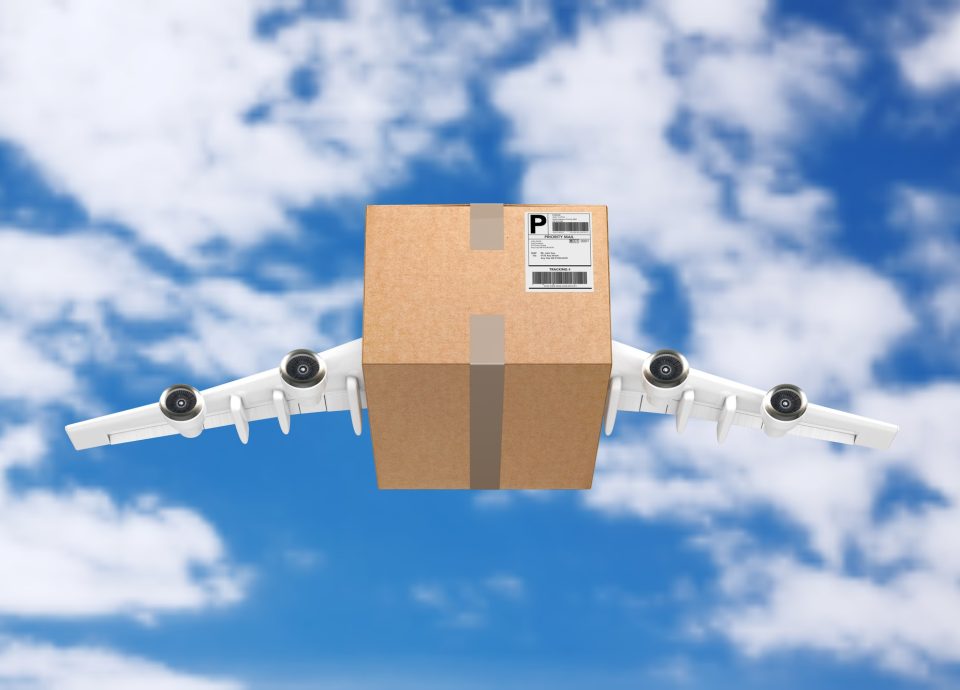Every supply chain faces a moment of truth—the point where “fast enough” is not fast enough, where standard lead times collapse under the weight of market expectations, and where slow-moving inventory translates directly into lost revenue. That’s the moment when air cargo transport stops being a nice-to-have and becomes the strategic choice. When a critical part is needed to prevent a line-down event, when a product launch has a fixed date, or when perishable or high-value goods can’t risk lengthy dwell, air cargo transport compresses time, reduces touchpoints, and restores control.
This guide explains the exact scenarios that make air cargo transport essential, how to build a business case around total landed cost (not just per-kilo rates), and what an end-to-end, zero-drama workflow looks like from pickup to proof of delivery. Written on behalf of Sprinter Emergency Transport Inc., it distills years of handling urgent, complex, cross-border moves into clear steps and practical checklists you can apply immediately.
What Air Cargo Transport Really Means Today
Air cargo transport is the movement of goods by aircraft—either in the belly of passenger flights or on dedicated freighters—synchronized with first-mile pickup, airport acceptance, security screening, airline build-up, linehaul flight, import clearance, and last-mile delivery. Unlike slower modes, air cargo transport reduces the number of handoffs, uses secure, controlled facilities, and offers reliable ETAs across continents.
Why leaders choose air cargo transport
- Time compression: Intercontinental delivery in hours to a few days
- Predictability: Multiple daily departures through hub networks
- Security: Screened cargo in restricted-access environments with fewer touches
- Reach: Access to landlocked, remote, or disruption-prone regions
Passenger belly vs. freighter capacity
- Passenger belly: High frequency for smaller, urgent consignments—ideal when air cargo transport must match tight schedules.
- Freighters: Main-deck doors, higher volumetric capacity, and options for outsized cargo or active temperature control, expanding what air cargo transport can handle.
The Breaking Points: When Air Cargo Transport Is the Only Sensible Choice
Certain conditions make the decision straightforward: speed and control are worth more than the rate differential.
Time-critical production and maintenance
A single missing component can stop an assembly line or ground a fleet. When downtime costs thousands per hour, air cargo transport is the least expensive “expensive” option.
Cold chain and stability windows
Pharmaceuticals, biologics, reagents, and some specialty foods have strict environmental limits. Validated packaging and short exposure windows make air cargo transport the safest path to maintain integrity and compliance.
Retail launches and event-driven demand
Marketing calendars don’t move. If inventory misses the window, value evaporates. Air cargo transport protects shelf dates, pop-ups, trade shows, and omni-channel activations.
High-value, high-shrink commodities
Electronics, luxury goods, optics, and prototypes benefit from fewer touches and secure nodes. Air cargo transport minimizes theft and damage risks.
Network disruption or scarce infrastructure
When ports are congested, roads compromised, or the destination is landlocked, air freight shipping keeps service levels intact and avoids cascading delays.
The End-to-End Workflow: How Air Cargo Transport Runs Without Surprises
Understanding the process turns promises into predictable outcomes.
Step 1: Planning and capacity booking
Lock airline space, choose alternates, and align service level (next-flight-out, standard, or charter). Early planning is how air cargo transport becomes resilient, not just fast.
Confirm up front
- Dimensions/weight (for chargeable weight)
- Temperature or dangerous goods requirements
- Delivery window and acceptable alternates
- Incoterms and payer of duties/taxes
Step 2: Packaging, labeling, and pickup
Design lightweight, robust packouts. Use internal blocking/bracing, edge protection, and clear handling icons. A secure truck collects and tenders freight to the airline terminal—where a smooth handoff keeps air cargo transport on schedule.
Step 3: Documentation and pre-clearance
Clean invoices, accurate HS codes, aligned quantities/values, and complete consignee data enable pre-filed entries. Getting documents right is the single best way to prevent air freight shipping delays.
Step 4: Security screening and build-up
In Canada, cargo must comply with Transport Canada’s Air Cargo Security Program. Screen-ready freight moves faster through piece-level screening and into ULD build-up, preserving the air cargo transport clock.
Transport Canada – Air Cargo Security Program.
Step 5: Uplift and linehaul flight
Milestones (received, screened, built, departed) feed real-time visibility. If irregular operations strike, a pre-planned alternate keeps air cargo transport moving rather than waiting for tomorrow.
Step 6: Arrival, customs, and recovery
Pre-filed entries with accurate data cut customs cycle time. Bonded recovery prevents warehouse queues from eating the buffer that protects on-time air cargo transport.
Canada Border Services Agency – Commercial Importing.
Step 7: Final mile and POD
Appointment control, white-glove options, and proof-of-delivery close the loop. The best air cargo transport programs standardize POD capture and exception root-cause analysis for continuous improvement.
The Economics: Why the Premium Often Pays For Itself
Comparing per-kilo rates alone misses the point. The right lens is total landed cost and the time value of money.
- Penalty avoidance: Preventing chargebacks, marketplace SLA failures, or line-down costs dwarfs the air premium.
- Inventory carrying cost: Faster air freight shipping shortens cash-to-cash cycles; less capital is trapped in transit or buffers.
- Damage and theft reduction: Secure nodes and fewer touches mean fewer write-offs and better gross margin.
- Revenue timing: Faster arrivals mean earlier invoicing and happier customers.
When a missed delivery risks a six-figure impact, air cargo transport typically returns multiples of its incremental cost.
Packaging and Risk Control: Engineering for Real-World Hazards
You can’t guarantee what you don’t control. Build packaging for the journey you’ll actually face.
Design principles
- Double-wall cartons or engineered crates to resist compression
- Internal bracing to eliminate internal movement
- Edge/corner protection; tilt/shock indicators for accountability
- Desiccants and barriers for humidity-sensitive items
Cold chain specifics
- Pre-condition passive packouts; validate hold times
- Consider active containers with telemetry for long routes
- Log temperatures to create a defensible record—vital for cold-chain air cargo transport
Visibility and Data: Turning Speed into Predictability
Fast is good. Predictably fast is better. Predictably fast and visible is best.
What you should see
- Milestones from tender to POD: received, screened, built, departed, arrived, customs status, recovered, out for delivery
- Exception alerts (reflight, weather, customs reviews)
- API/EDI feeds into your TMS/ERP so ops and finance stop chasing emails
With live data, air freight shipping shifts from a tactical scramble to a controllable lever you can plan around.
13 Signals It’s Time to Shift Volume to Air Cargo Transport
- Launch dates keep slipping despite careful planning.
- High-velocity SKUs cycle out of stock after marketing spikes.
- Returns linger in transit and miss re-sell windows.
- Penalties for late delivery are climbing.
- Damage/theft claims are eroding margin.
- Your CX team is buried under WISMO tickets.
- Inventory buffers are bloated to compensate for unreliable transit.
- Priority customers need guaranteed service windows.
- You’re expanding into landlocked or disruption-prone regions.
- Critical spares risk line-down events.
- Cold-chain shipments suffer temperature excursions.
- Prototype or IPO-sensitive shipments need discrete handling.
- The business wants a shorter cash-to-cash cycle.
Start with the lanes where air cargo transport clearly moves the needle, then scale with data.
Compliance and Security: Making Screen-Proof Plans
Delays rarely begin in the sky—they start at the dock or in the documents. A disciplined compliance routine prevents bottlenecks that defeat air cargo transport.
Canada-specific pillars
- Transport Canada security rules for screening and chain-of-custody
- CBSA requirements for accurate declarations, duties/taxes, and audit-ready records
- IATA DG rules for lithium batteries and other hazardous materials
- GDP/cold-chain documentation for pharmaceuticals
Clean documentation and screen-ready tender keep air cargo transport gliding through terminals rather than sitting in rework.
Technology, Governance, and KPIs That Matter
Air cargo transport is a performance program, not a series of bookings. Measure what matters.
Core KPIs
- On-time performance door-to-door
- Gateway dwell (origin and destination)
- Exception rate and mean time to recovery
- Milestone scan compliance
- Invoice accuracy (quotes vs. bills)
Cadence
Monthly scorecards and quarterly business reviews reveal trendlines and root causes. That’s how air cargo transport stays consistently fast.
Building a Multimodal Strategy with Air Cargo Transport
Speed and cost aren’t binary. Blend modes intelligently.
- Use next-flight-out air cargo transport for line-down or launch-critical portions.
- Use standard air for routine replenishment where days still matter.
- Defer bulk replenishment by ocean or road.
- Rebalance every quarter using sell-through, exception, and cost data.
This playbook preserves cash while protecting deadlines.
Why Choose Sprinter Emergency Transport Inc.
When minutes matter, you need more than a confirmation number—you need orchestration. Sprinter Emergency Transport Inc. exists for those moments.
What we deliver
- Capacity when it counts: Access to passenger belly networks, freighters, and charters so air cargo transport lifts even in peak season.
- 24/7 command and recovery: Named operations contacts, proactive exception handling, and pre-built alternates to protect timelines.
- Compliance baked in: Lithium battery/DG fluency, validated cold chain, and audit-ready documentation aligned to air freight shipping requirements.
- Secure handling from end to end: Screen-ready tender, tamper-evident seals, vault/escort options, and bonded cartage at destination.
- Real-time visibility: API/EDI feeds, milestone scans from tender to POD, and temperature telemetry when required.
- Transparent pricing: Line-item quotes that match invoices—no surprises.
If you’re ready to replace variability with discipline, we’ll design an air cargo transport program that performs under pressure.
Saving a Multi-Country Launch
A consumer-tech brand faced a three-country launch with broadcast ads booked and influencers queued. We split inventory across consecutive flights, pre-filed customs data, staged bonded trucks, and kept a reflight plan on standby. Every store stocked on time. Marketing spend landed; air cargo transport turned a risky week into a routine success.
Make Speed Your Strategy—Not Your Gamble
Unpredictable logistics erode margins and customer trust. A well-built air freight shipping program restores control: capacity to lift, processes to pass security, data to see issues early, and recovery plans when variables change. That combination minimizes operational, financial, compliance, and reputational risk in one motion.
Sprinter Emergency Transport Inc. is ready to translate your deadlines into dependable outcomes. Tell us your lanes, constraints, and deadlines—we’ll deliver an air cargo transport plan that protects revenue and reputation alike.
Need a plan today? Contact Sprinter Emergency Transport Inc. for a rapid assessment and flight-ready options.
Frequently Asked Questions
1) When should I choose air cargo transport over ocean or road?
Select air cargo transport when delay destroys value—line-down prevention, fixed launch dates, cold-chain integrity, or high-shrink corridors. If a day of delay costs more than the rate delta, the choice is clear.
2) How do I justify the cost of air cargo transport to finance?
Build a total-landed-cost model that includes penalty avoidance, inventory carrying cost, shrink/damage reduction, and earlier invoicing. In many cases, air cargo transport saves more than it costs.
3) Can lithium batteries and electronics move safely via air cargo transport?
Yes, under strict IATA rules for classification, packaging, labeling, and state-of-charge. A compliant workflow keeps air cargo transport on schedule and avoids security holds.
4) How can I speed up customs during air cargo transport?
Pre-file entries with accurate HS codes and values, align Incoterms and payer responsibilities, and coordinate with a broker who understands airport workflows. Clean data keeps air cargo transport moving.
5) Is cold chain feasible with air cargo transport?
Absolutely. Use validated passive packouts or active containers with telemetry, select routings with minimal ramp exposure, and log temperatures end-to-end to document compliance.
6) What visibility should I expect during air cargo transport?
Milestones from receipt to POD—screened, built, departed, arrived, customs status, recovered, out for delivery—plus exception alerts integrated into your systems. Visibility turns air cargo transport into a controllable lever.
7) How fast can Sprinter Emergency Transport Inc. launch a new air cargo transport lane?
In most major gateways, we can collect, screen, and uplift same-day, with alternates pre-planned. Our 24/7 team manages exceptions so air cargo transport stays on schedule.




